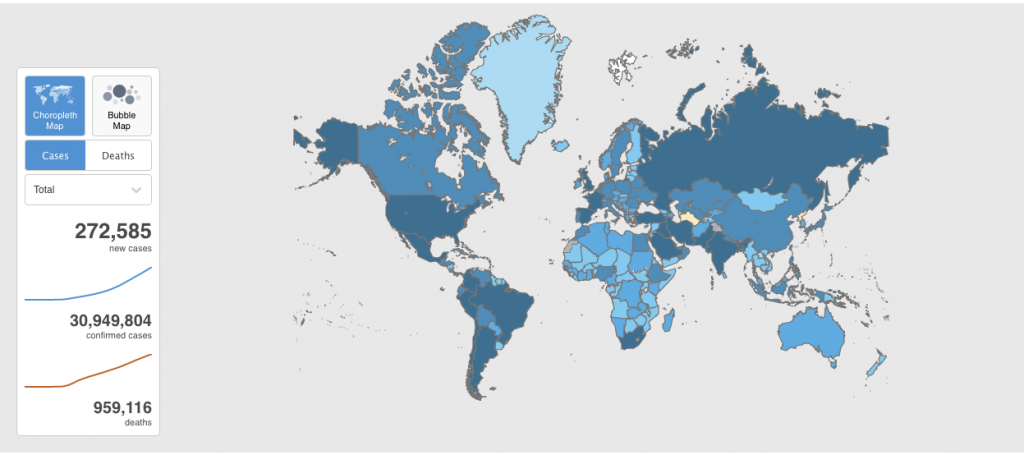With the fight to contain coronavirus now a global battle, the world looks very different from what it did just a few months ago. There’s no doubt that these are strange times to be surviving in, let alone thriving in. And for those of us with an online business, you might feel lost and uncertain about what to do.
It’s hard to remember a stricter start to a new year. A couple of months in and the world ground to a halt with the invasion of Covid-19. It feels a bit surreal, but, fortunately, each day brings better news. Even so, small businesses have faced their most formidable challenge yet. From social distancing to lockdown, the cash flow to businesses may have taken a sizeable hit. To help, we’ve rounded up some must-read tips for small businesses to beat the pandemic.

1. Stick With What You Already Have
Let’s start with what not to do. Until the coronavirus pandemic subsides, do not try launching any new products, especially if they are wildly different from your existing ones. Pumping time and money into unproven ideas is always a risk—but given the current challenges that all businesses must face during this outbreak, it is an unjustifiable risk for a relatively new endeavor. Instead of spreading your resources too thin, go for what’s attainable by doubling down on your existing product line and following the other tips in this post.

2. Embrace Content Marketing
Although content marketing is rarely a quick fix, over time, it can produce immense gains in traffic, authority, and sales for businesses looking to carve out their place. Your content marketing should be executed with the long-term goals you have for your business in mind, rather than in a scattershot approach. Given that the COVID-19 pandemic might necessitate a lengthy social shutdown, a fine-tuned content marketing strategy can be especially helpful to reach new audiences over the next few months.

3. Best approach to content marketing worth your consideration include:
Blogging:
Writing blog posts is an excellent method to connect with new customers and build authority in the cannabis space. Ensure that your posts offer value to readers, rather than focus too narrowly on promoting your business. Helpful content is often shared on social media, especially when calls to action are integrated into your posts. Additionally, highly informative content has a much greater likelihood of being linked to credible websites, a practice called back linking, which significantly improves your search engine ranking.

SEO:
Search engine optimization or SEO applies to your blog posts and the copy on your website. You’ll want to optimize your website and content with a mix of short-tail keywords: search queries that consist of one or two words, and long-tail keywords, which are search queries that are three words or longer. Short-tail keywords tend to be extremely competitive, so as a new business, you’ll want to focus primarily on driving traffic and sales through long-tail keywords. You can use Google Ads Keyword Planner or a simple Google search of a long-tail keyword to determine its viability. One key point is to ensure that your copy doesn’t read stiffly; over-optimization is likely to turn off potential customers because of poor readability and can also backfire in Google’s search algorithm.

Facebook:
With 2.45 billion monthly active users, Facebook is still social media royalty. If you haven’t already done so, you may want to create a Facebook page. Since your business’ page can be controlled through your existing personal account, it’s easy to invite all your Facebook friends to like the page. One potential avenue to increase reach is to write a personal post asking your friends to invite at least three other people to select your business’ page. If that doesn’t garner an appropriate response, take the time to reach out individually to your Facebook friends, and make the asks.

Instagram:
Instagram allows you to post your products and connect to potential customers via a hashtag system. With 65% of Instagram users between the ages of 18 and 34, this is a great tool to capture a youthful demographic’s attention– be sure you target users of legal age.

Twitter:
Twitter can be an excellent way to zero in on potential customers in your local area. Unlike other social media channels, messaging can be posted at a higher volume on Twitter without alienating prospects, affording you more chances to connect.

4. Optimize Your Pages
You’ve probably heard a lot about SEO over the years, but maybe you’ve never really gotten a full grasp of what it is and what it can do for your store. The short story is, if your store is optimized correctly, you can get customers to your site for free thanks to the magic of search engines. If you don’t have much cash to spend on advertising, optimizing your website is an excellent way to start selling, build up your visitor numbers, and gather data. By the time you do want to start spending on ads, you might be able to launch straight into Lookalike audiences. However, it does take time. It might be two or three months before you start seeing results.
You optimize your pages through working relevant keywords into the text you already have on your home page and product pages. To do this, you need to find SEO tools – such as Ubersuggest – to help you. Keywords don’t just have to be one word. Usually, they’re two or three words or even a longer phrase. When you start searching for keywords, you’ll notice they have a ‘search volume’ attached – this is how many people are searching for that term every month. If your store is brand new, start by targeting keywords with lower search volumes because it will be easier to rank.
Once you’ve optimized your home page and product page, start writing blog articles. This is where you can start getting your website ranking. You can try to rank for one main keyword and several secondary keywords (these will be phrases with lower search volumes than your main keyword) per post.

5. Hire Influencers
Hiring an influencer to promote your products usually produces a great ROI, but it’s essential to choose wisely. While hiring a celebrity influencer may appear to be the best way to go, that’s not the case. Conversion rates and trust are low, while price points are high, sometimes reaching six figures.
If the influencers you are targeting have a price point outside of your budget, you may want to barter. Some influencers will stay firm on their price point, but others will choose to reduce their fees in exchange for your products or other ways to provide value.

6. Make Use Of Listing Products On Google Shopping
There are many ways in which Google Shopping can boost your business, from introducing a new channel to your omnichannel strategy to expanding your brand’s online presence. To get your business started with Google Shopping, here are a couple of direct and indirect benefits of the platform, as well as points to be aware of:
- Google Shopping Ads ensure your products will appear above organic search results, which means that even if they don’t result in conversion, the ads will quickly and effectively expand your brand’s online visibility.
- As part of an omnichannel strategy, Google Shopping provides another channel for sales. If well implemented, a Google Shopping campaign can drive traffic and boost your business’s revenue.
- Small businesses face competition from big brands. While this can be overwhelming, some features will strengthen your campaigns despite the tough competition, like the ability to segment campaigns and geo-targeting.
- Google Shopping works through Adwords, which means that keywords are “auctioned.” It’s essential to set your auction budget to be aligned with your business goals because if your daily spend dips too low, your ads will have low visibility.

Now is an excellent time to make sure your website and social media are perfect and many of your blog posts going forward are relevant to the current climate. More people are online than ever, and traffic is certainly not down. If you can boost that traffic through these steps or others, you can keep your business on an upward trajectory even in these challenging times.